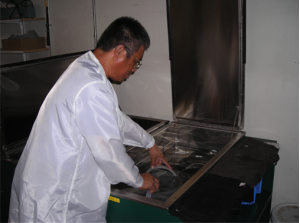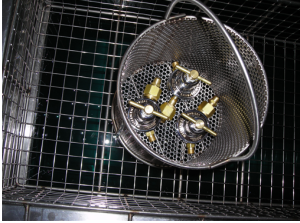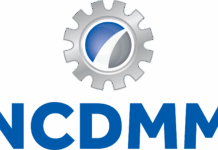Top 10 Ways Ultrasonic Cleaning Lowers Costs and Increases Productivity
Every business owner knows that lowering expenses can make their business more profitable. But most decisions are more complex than simply, “cut cost, increase profit.” Deciding whether to make the switch to ultrasonic cleaning from solvent parts washing can be one of those complex decisions. Ultrasonic cleaners thoroughly and efficiently clean parts and equipment, work on a variety of materials and remove a wide range of contaminants. So does manual washing. But, while the initial investment in an ultrasonic cleaner can be higher than continuing to use a solvent parts washer, ultrasonic cleaning offers many benefits that more than outweigh the initial expense.
These include:
 An ultrasonic cleaner delivers labor costs that are considerably lower than those associated with manual washing. In most cases, companies see as much as a 10:1 reduction in labor. Ultrasonic cleaners get even the hardest to reach areas clean without requiring the hand scrubbing that is necessary with manual washing. Instead of using specially outfitted personnel scrubbing and washing and often missing hard-to-reach crevices, the operator of an ultrasonic cleaning machine simply puts parts into the machine for cleaning and then is able to do other tasks while cleaning is underway.
An ultrasonic cleaner delivers labor costs that are considerably lower than those associated with manual washing. In most cases, companies see as much as a 10:1 reduction in labor. Ultrasonic cleaners get even the hardest to reach areas clean without requiring the hand scrubbing that is necessary with manual washing. Instead of using specially outfitted personnel scrubbing and washing and often missing hard-to-reach crevices, the operator of an ultrasonic cleaning machine simply puts parts into the machine for cleaning and then is able to do other tasks while cleaning is underway.
- Employee training for the ultrasonic process is quick and easy. Because the entire process is simple and safe, employees don’t need prolonged training and repeated refreshers about working with and storing toxic chemicals, clean-up, risk, and regulations.
- Ultrasonic cleaners are self-cleaning; there’s no need to dedicate employees to the clean-up process like there is with manual cleaning. People can be reassigned to areas of greater need.
- The soaps used in ultrasonic cleaning cost less than most industrial cleaning solvents.
- Ultrasonic cleaners don’t typically create the same fluid waste stream that has to be disposed of and manifested; they use environmentally-friendly detergents that are non-toxic and non-flammable. Organic solvents, on the other hand, require special handling, special storage, and special personnel protective equipment (PPE) while in use. The vapors must be vented and captured, and the used solvents must be treated as hazardous waste.
- Solvent parts washing requires the use of volatile toxic solvents that are so flammable, the accidental introduction of heat from any source could start a fire or trigger an explosion. As a result, insurance underwriters typically require that companies using and storing organic solvents must carry additional liability insurance and pay higher premiums and deductibles. Ultrasonic cleaning has none of these risks.
 Exposing employees to the vapors from organic solvents can cause both short- and long-term health issues, increasing numbers of days off, as well as potentially raising health and disability insurance costs.
Exposing employees to the vapors from organic solvents can cause both short- and long-term health issues, increasing numbers of days off, as well as potentially raising health and disability insurance costs.
- The hazards of organic solvents are so high, companies that utilize them are usually required to install and maintain more extensive fire-protection systems. They are also typically subjected to additional inspections by their insurance carrier and the fire marshal.
- The cleaning solution and temperature used in the ultrasonic cleaner can be exactly matched to the needs of the application, providing even more efficient cleaning.
- The watt density (the amount of power available in the ultrasonic tank versus the amount of liquid volume) and the output frequency (the kHz rate which impacts how many bubbles are generated per second) can both be set to create the most effective cleaning based on the composition of the part to be cleaned. These settings help ensure companies don’t end up paying for power they don’t need. Using the proper setting also helps maximize the life expectancy of the equipment.
When the costs, risks, and benefits are analyzed and compared, it’s clear that ultrasonic cleaning offers significant financial savings and increased productivity over solvent parts washing. When the question is asked – why handle dangerous chemicals, risk an explosion, and spend money on extra insurance when you don’t have to – the answer seems simple. Ultrasonic cleaners are safe, use environmentally-friendly detergents, pose limited risk of explosion or fire, and reduce the amount of employee time that must be dedicated to washing – all of which can help your company lower costs and operate more productively. And in today’s economy who doesn’t want that?
For more information, please visit:
www.omegasonics.com
Or contact:
omegasonics@omegasonics.com
*Byline: Frank Pedeflous, president of Omegasonics.










































